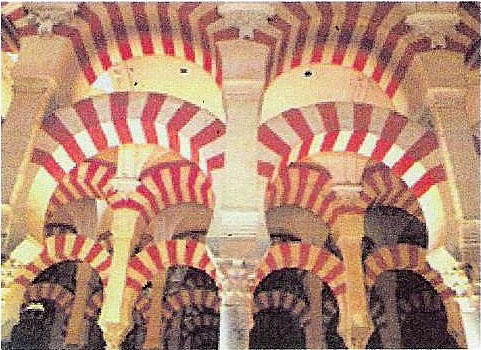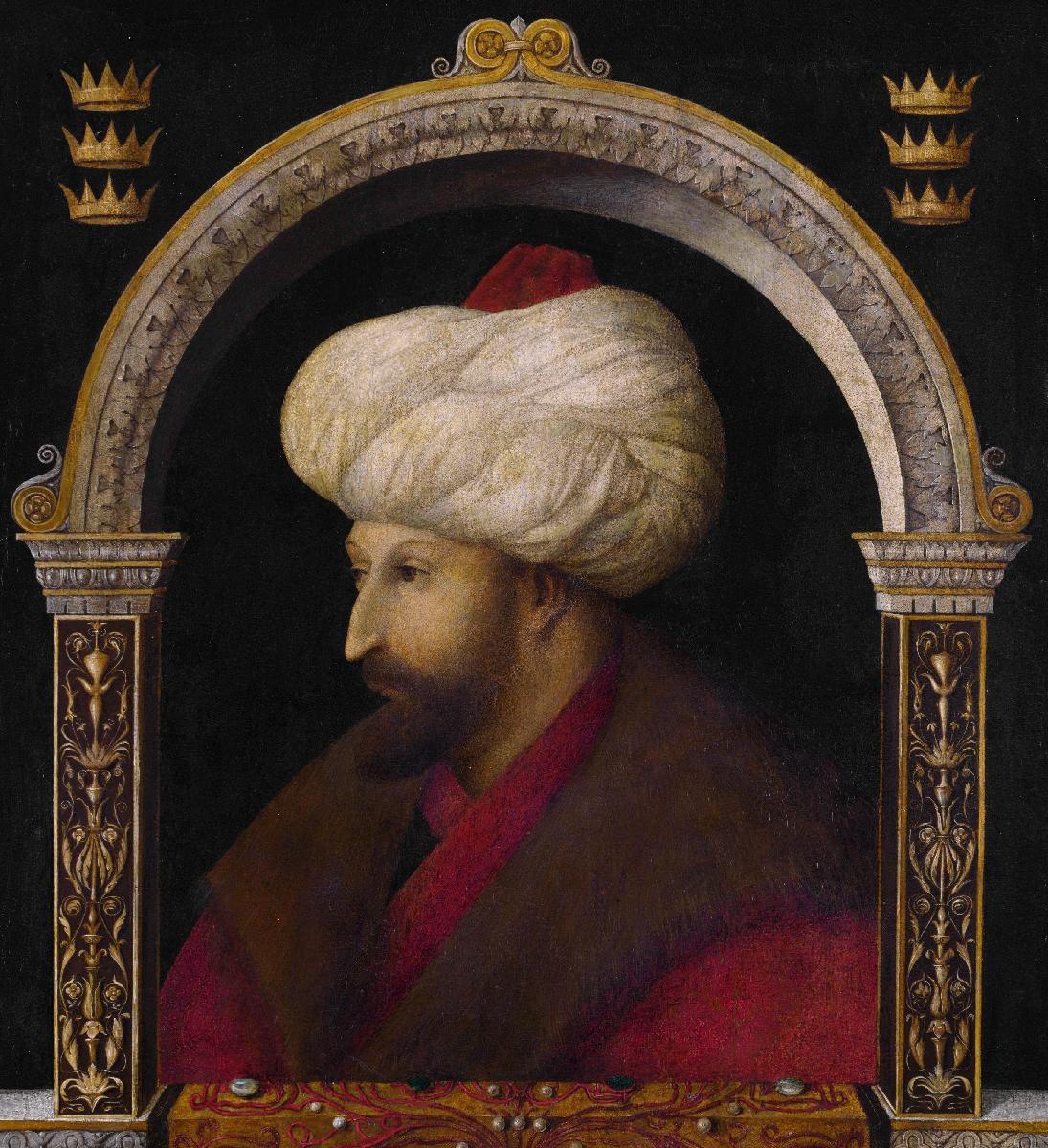The Umayyad and
Abbasid Dynasties
7th - 15th century
Somehow neither the Byzantines nor the Persians, whose soldiers were recovering from a long battle against each other, must have seen the Arab Muslims as an imminent danger. They didn’t count on the defection of the Bedouins and other nomadic tribes as well as the Monotheists and the Jacobins (both Christian cults condemned as heresies) persecuted in Syria and Egypt - two of Byzantium’s most coveted provinces.
In the struggle for power between the different clans, the Umayyad, from Calif Uthman’s family, launched a second wave of expansionism. Ali, the fourth calif was assassinated and his sons Hasan and Husain were killed not far from Baghdad by Uthman’s cousin Moawia in the Battle of Kerbala October 10, 680. From then on the rift between the Umayyad (Sunni) and Ali’s faction (Chiite) was official. The date became most holy for Chiites. Five years later Moawia moved the Muslim capital from Medina to Damascus, the Umayyad capital in Syria. The shift in power to Damascus symbolized the end of an era. In Medina the first four califs had all been close Companions of the Prophet (Rashidun Caliphate). All of them were assassinated by opposing factions.
Ali’s followers allied with the Abbasid in Mecca, a tribe stemming from Ali's great-uncle, Mohammed’s uncle Abbas. In 750 the Abbasid calif Al Mansur overthrew Moawia II, who became the last Umayyad ruler. His territories were seized and the Muslim capital was moved from Damascus to Baghdad. The Abbasid had several sects, the most significant are the Sufis, the Fatimides and the Assassins. The Assassins terrorized the population, gaining ground during the Crusades until they were stopped by Genghis Khan’s son Hugalu and the Egyptian Sultan Baibars.
One member of the Umayyad, Rahmani, escaped and became leader of the "Moors". The name stems from moro, dark skinned, to describe the Northwest Sahara and North African Muslims (Berbers) that had captured Spain.
In 1071 the Turkish Sultan Alp Arslan, from his new headquarters in Jerusalem, defeated the Byzantines at the “Battle of Manzikert,” ancient Armenian city in eastern Turkey nine hundred miles south of Constantinople. This major victory of the Seljuk Turks (generally Sunni Muslims) alarmed Pope Urban II, with high stakes in Constantinople as the Church's bastion in the East. The Church had been divided between Rome and Byzantium by Roman Emperor Constantine, the first Christian emperor, in the 4th century out of necessity. Rome was being invaded en masse by tribes from Northern Europe. After Constantine died the city of Byzantium was renamed Constantinople. The theological views of the two entities may have been diametrically opposed but were nonetheless from the same Christian stock.
In 1095 Byzantine Emperor Alexius asked Pope Urban II in Rome for soldiers to help defend the city. The pope saw this as an opportunity to launch a general campaign against the Muslim infidels that had captured Jerusalem and were persecuting Christian pilgrims. This and Jerusalem's strategic military location gave the pontificat grounds to enlist Europe's kings for the 1st Crusade in 1097.
Sunni was the official religion under the Seljuks but it was not mandatory to change religious beliefs. They encouraged learning and free trade, and in the early 12th century Seljuk territories prospered. The most important writers, artists and philosophers of Islam lived around this time. The works of the Greek philosophers were recovered and translated from Greek to Arabic and Persian. Orthodox Muslims frown on the idea that Greek philosophy had any influence on Islam, insisting God is the only foundation of their religion. The Druze and the Sufi disagreed, and made the philosophical connection. Sufi is a Chiite religious faction that focuses on spiritual discovery rather than doctrine. Druze is a combination of the Ismailian school of Shia Islam with Greek philosophy and Gnosticsim. Al-Hakim is the spiritual leader, the Muslim version of Jesus son and messenger of God who will come back to earth, though accounts relate he was not the instigator of the rumor.
By the end of the 12th century the Arab Muslims, with Baghdad as their capital, were cornered. The Crusading Christians had taken Sicily and the Spanish provinces, and the Turkish Muslims occupied most of Asia Minor but the death blow came from the northeast; the Mongols and their leader Hugalu Khan. In 1258 Baghdad was sacked, completely destroyed, the great libraries burned and the population killed. The Arabs never quite recovered, the Siege of Baghdad marks the beginning of the end of the Islamic Golden Age.
One reason the califs were unable to defend Iraq, besides a general laziness, was the custom of using slaves as soldiers. Local governors used slaves-for-hire to protect their microstates independent of Baghdad. The country had no unity. The soldiers were happy to leave their posts, and actually get paid to overthrow the Abbasid.
The remarkable success of Islam the first twelve years of expansionism, which started in 633, was due to wise strategy and good timing.
The nomadic tribes in Mesopotamia (between the Tigris and the Euphrates) had not been treated well by the Sassanid Emperor Chosroes II. It wasn't difficult for the Arab Muslims to convince the tribes to join forces and defeat the despotic ruler.
The Sassanid, who practiced Zoroastrianism, were the last native rulers of Persia. Thereafter Islam became the official religion. The Muslims continued to push their way through Asia Minor and the Middle East; Byzantium was spared by a mountainous terrain that served as a natural border.
In 1299 a Turkish soldier, Osman, raided Byzantine strongholds and became sultan of the occupied territories. His followers were called Ottomans.
Their policy of driving out the Christians appealed to Muslims all around and the Ottomans enlisted many adepts. The Europeans had not made themselves popular during the Crusades with the backward, feudal society they'd established in the captured territories.
< In 1453 the Ottoman sultan Muhammad II seized Constantinople after blockading the Byzantine capital for five months. The victory was military and symbolic. Thus ended a Muslim campaign to capture the city that lasted eight hundred years.

Umayyad architecture
